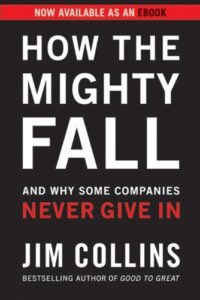|

|
How the Mighty Fall:
…the greatest danger comes not in ignoring clear and unassailable facts, but in misinterpreting ambiguous data in situations when you face severe or catastrophic consequences if the ambiguity resolves itself in a way that’s not in your favor.
|
070 |
|
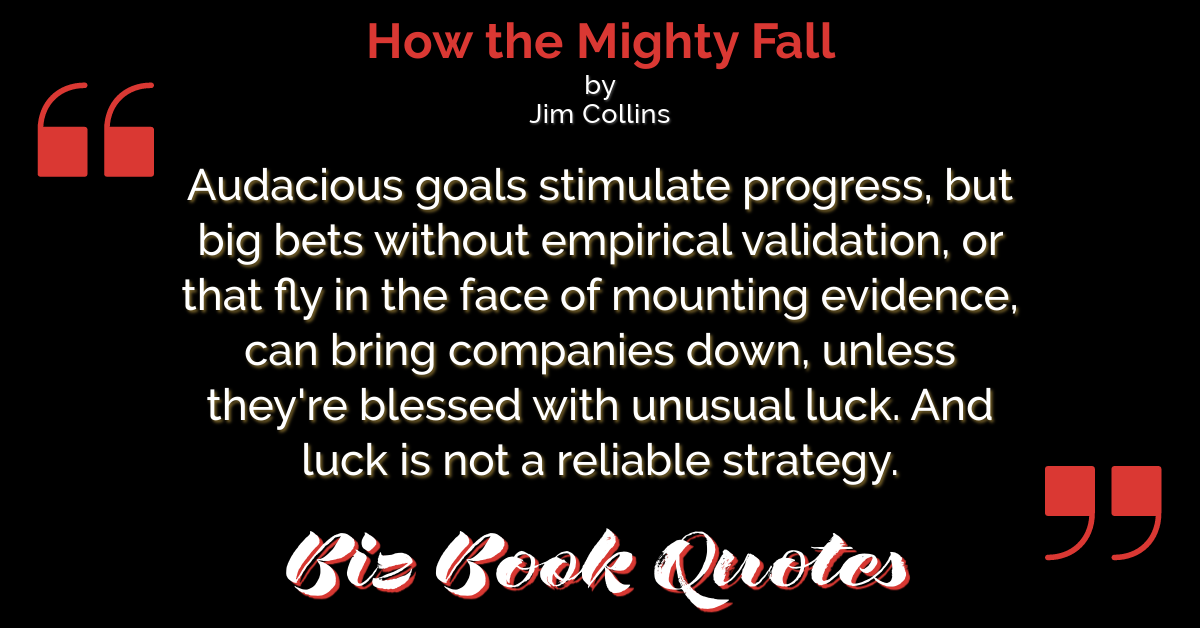
|
How the Mighty Fall:
Audacious goals stimulate progress, but big bets without empirical validation, or that fly in the face of mounting evidence, can bring companies down, unless they’re blessed with unusual luck. And luck is not a reliable strategy.
|
070 |
|

|
How the Mighty Fall:
Reorganizations and restructurings can create a false sense that you’re actually doing something productive… But when you begin to respond to data and warning signs with reorganization as a primary strategy, you may well be in denial.
|
080 |
|

|
How the Mighty Fall:
There is no organizational utopia. All organizational structures have trade-offs, and every type of organization has inefficiencies.
|
080 |
|
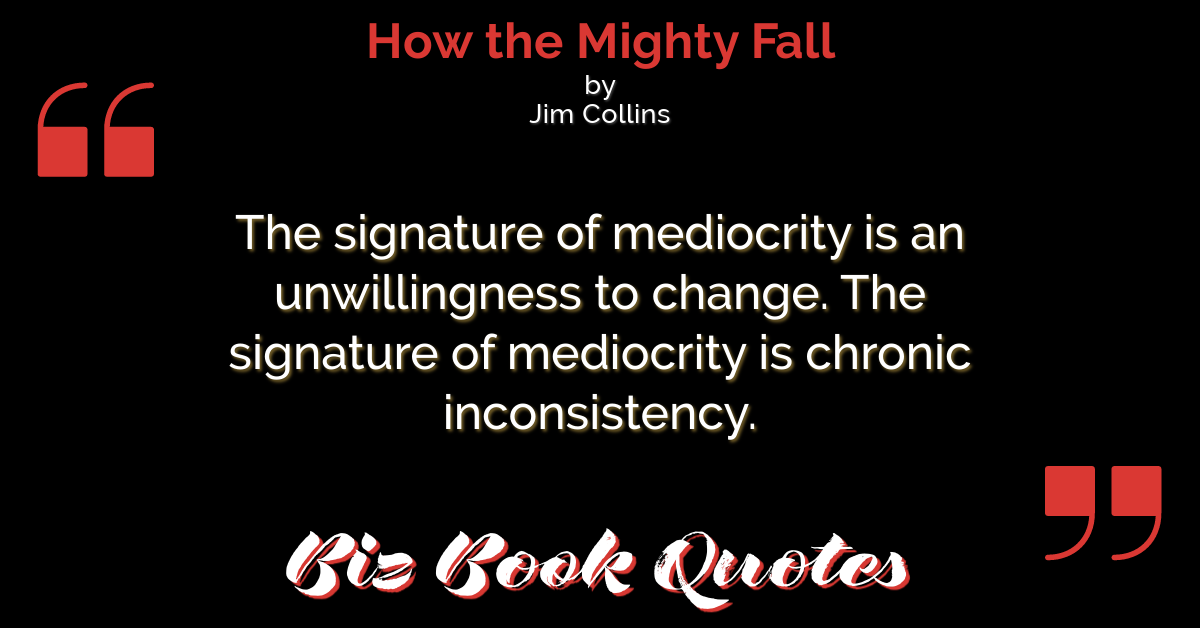
|
How the Mighty Fall:
The signature of mediocrity is an unwillingness to change. The signature of mediocrity is chronic inconsistency.
|
092 |
|

|
How the Mighty Fall:
…rebuilding greatness requires a series of intelligent, well-executed actions that add up one on top of another.
|
094 |
|
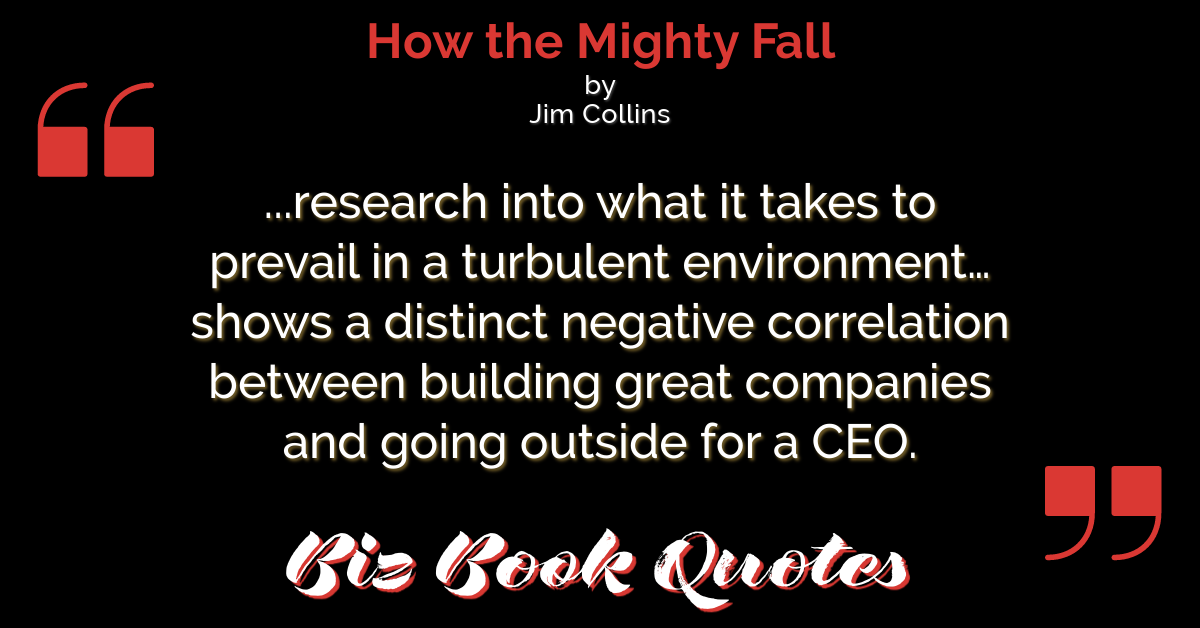
|
How the Mighty Fall:
…research into what it takes to prevail in a turbulent environment… shows a distinct negative correlation between building great companies and going outside for a CEO.
|
095 |
|

|
How the Mighty Fall:
When we find ourselves in trouble… The very moment when we need to take calm, deliberate action, we run the risk of doing the exact opposite and bringing about the very outcomes we most fear.
|
096 |
|
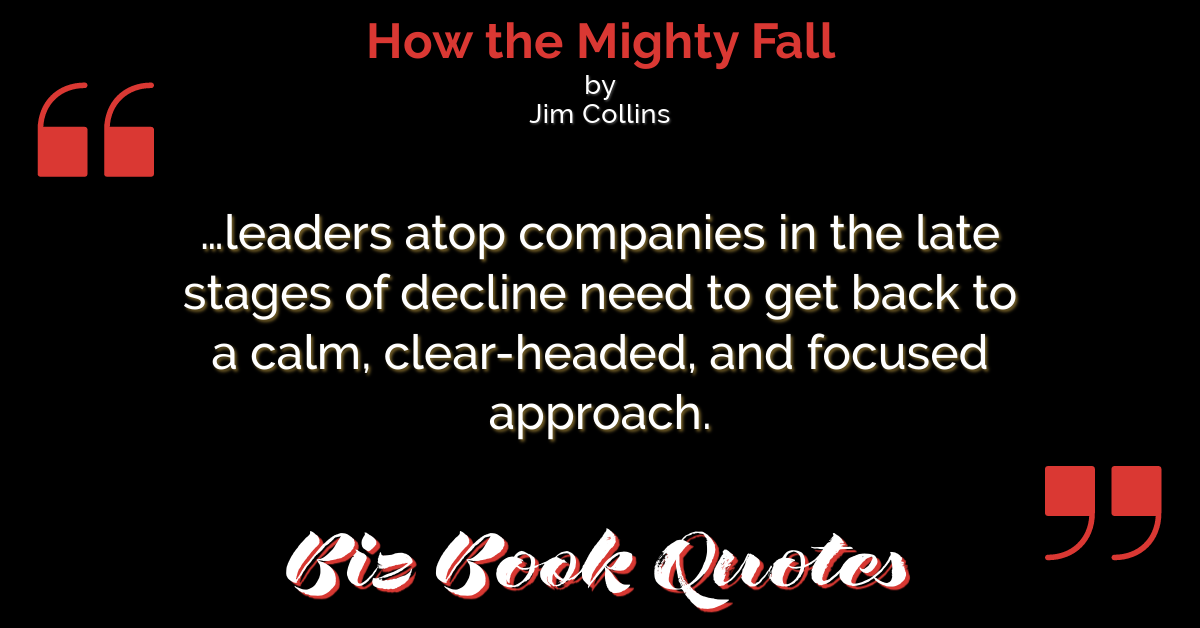
|
How the Mighty Fall:
…leaders atop companies in the late stages of decline need to get back to a calm, clear-headed, and focused approach.
|
097 |
|
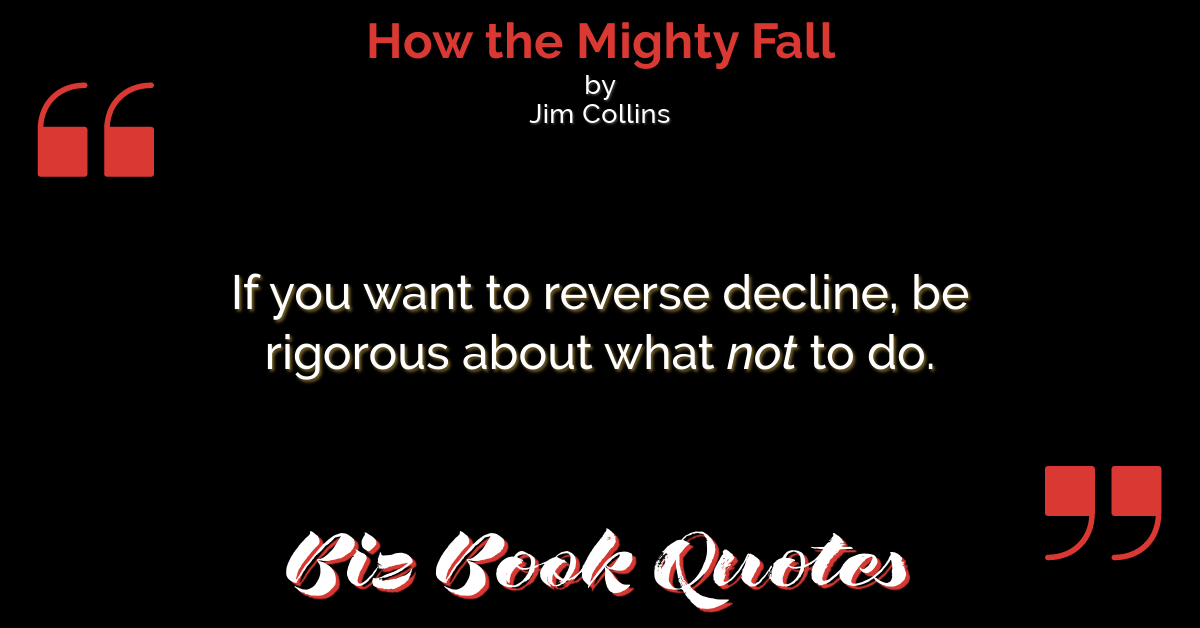
|
How the Mighty Fall:
If you want to reverse decline, be rigorous about what not to do.
|
097 |
